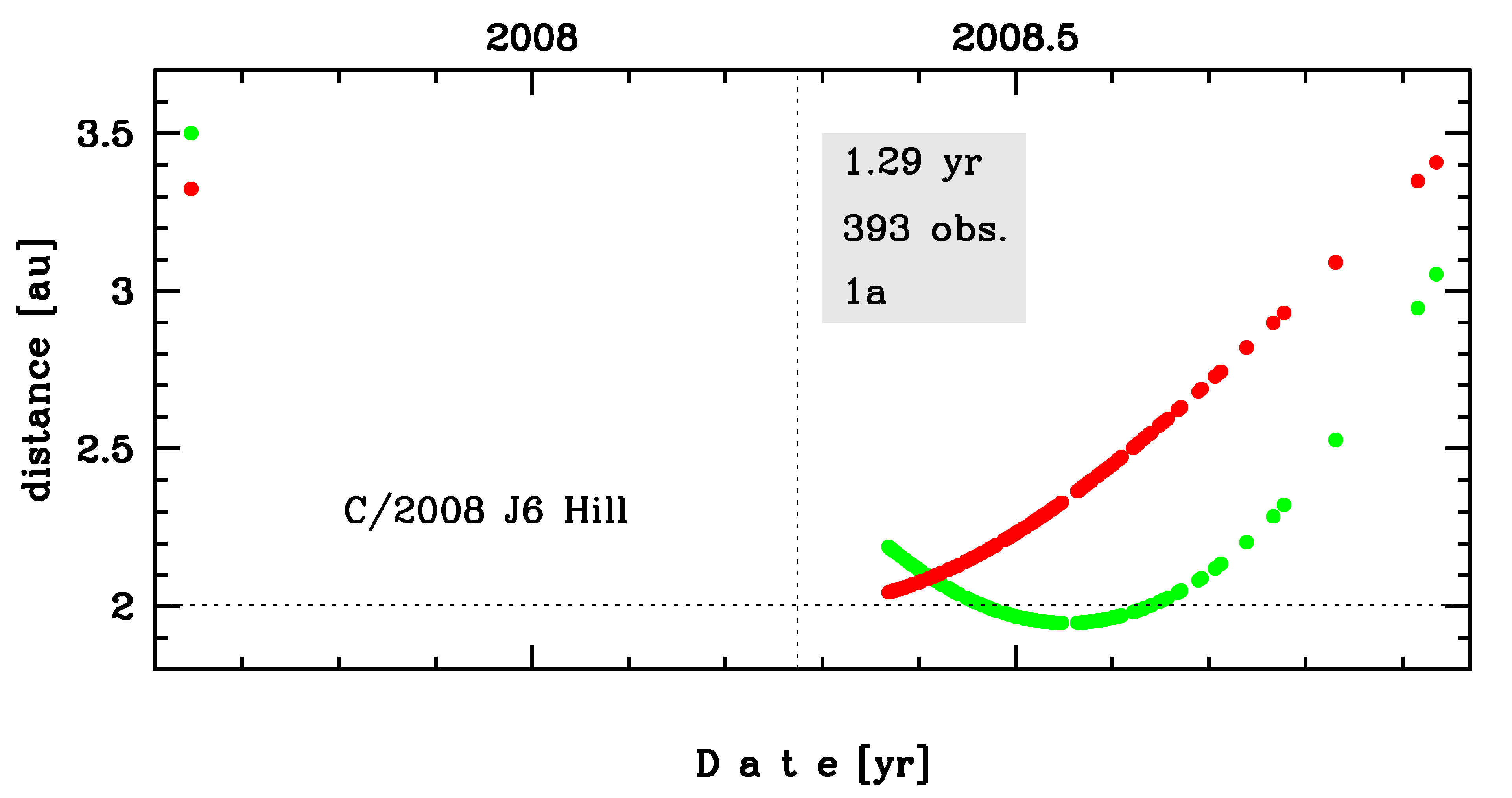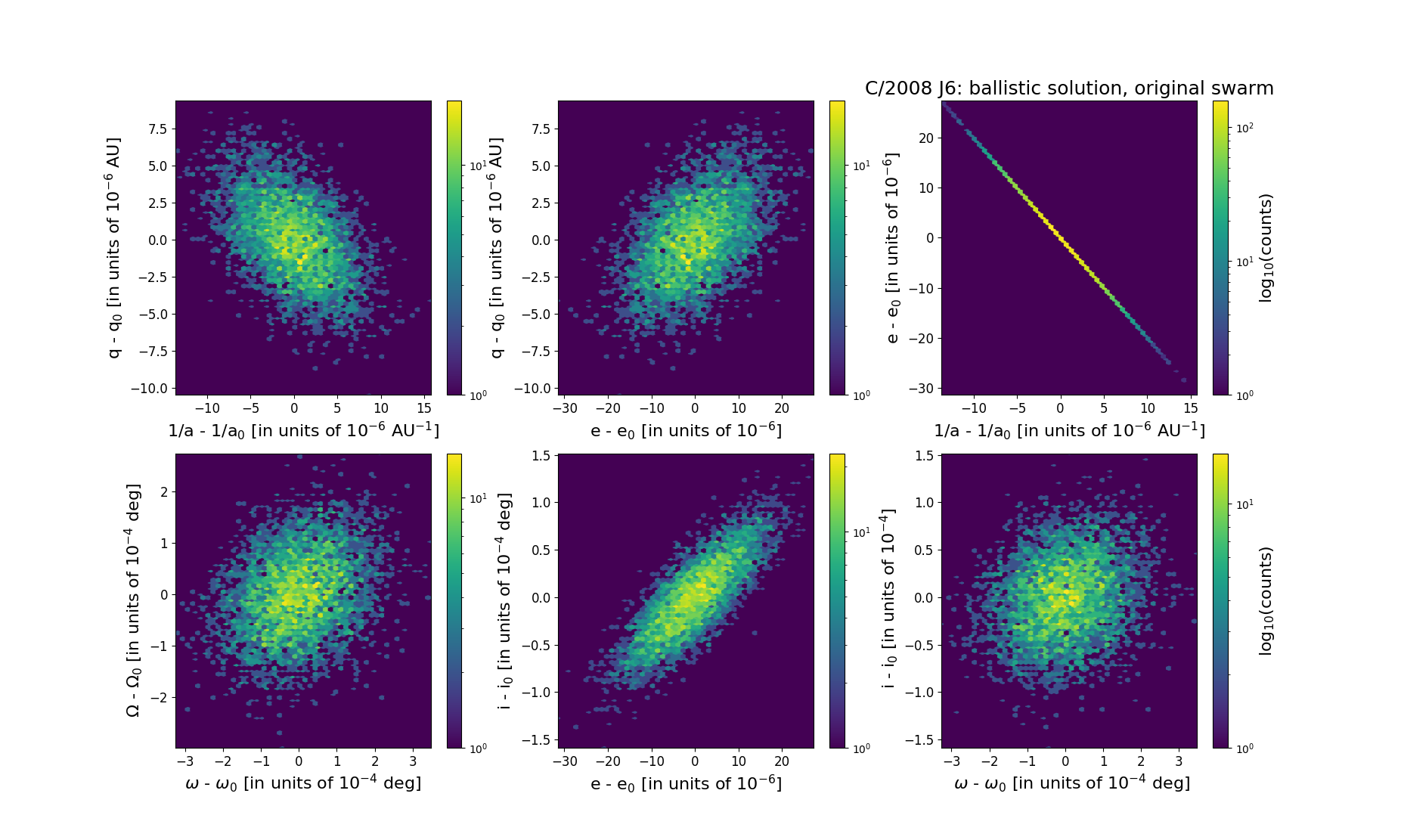C/2008 J6 Hill
more info
Comet C/2008 J6 was discovered on 14 May 2008 by R. E. Hill (Catalina Sky Survey); that is more than a month after its perihelion passage. A few pre-discovery images taken about 9 months before comet discovery (on 24 August 2007) during Siding Spring Survey were next found. The comet was observed until 7 December 2008.
Comet had its closest approach to the Earth on 13 March 2008 (1.301 au), about a month before its perihelion passage.
Solutions given here are based on data spanning over 1.29 yr in a range of heliocentric distances: 3.32 au – 2.000 au (perihelion) – 3.41 au.
This Oort spike comet suffers moderate planetary perturbations during its passage through the planetary system; these perturbations lead to escape the comet from the planetary system on hyperbolic orbit (see future barycentric orbits).
See also Królikowska and Dybczyński 2013 and Królikowska 2020.
Comet had its closest approach to the Earth on 13 March 2008 (1.301 au), about a month before its perihelion passage.
Solutions given here are based on data spanning over 1.29 yr in a range of heliocentric distances: 3.32 au – 2.000 au (perihelion) – 3.41 au.
This Oort spike comet suffers moderate planetary perturbations during its passage through the planetary system; these perturbations lead to escape the comet from the planetary system on hyperbolic orbit (see future barycentric orbits).
See also Królikowska and Dybczyński 2013 and Królikowska 2020.
| solution description | ||
|---|---|---|
| number of observations | 393 | |
| data interval | 2007 08 24 – 2008 12 07 | |
| data type | significantly more measurements after perihelion (POST+) | |
| data arc selection | entire data set (STD) | |
| range of heliocentric distances | 3.32 au – 2.00 au (perihelion) – 3.41 au | |
| detectability of NG effects in the comet's motion | NG effects not determinable | |
| type of model of motion | GR - gravitational orbit | |
| data weighting | YES | |
| number of residuals | 765 | |
| RMS [arcseconds] | 0.50 | |
| orbit quality class | 1a | |
| orbital elements (barycentric ecliptic J2000) | ||
|---|---|---|
| Epoch | 1708 03 08 | |
| perihelion date | 2008 04 10.92744663 | ± 0.00016719 |
| perihelion distance [au] | 1.99507980 | ± 0.00000264 |
| eccentricity | 0.99995829 | ± 0.00000801 |
| argument of perihelion [°] | 10.882716 | ± 0.000097 |
| ascending node [°] | 298.266713 | ± 0.000076 |
| inclination [°] | 45.029452 | ± 0.00004 |
| reciprocal semi-major axis [10-6 au-1] | 20.90 | ± 4.01 |
| file containing 5001 VCs swarm |
|---|
| 2008j6a5.bmi |

